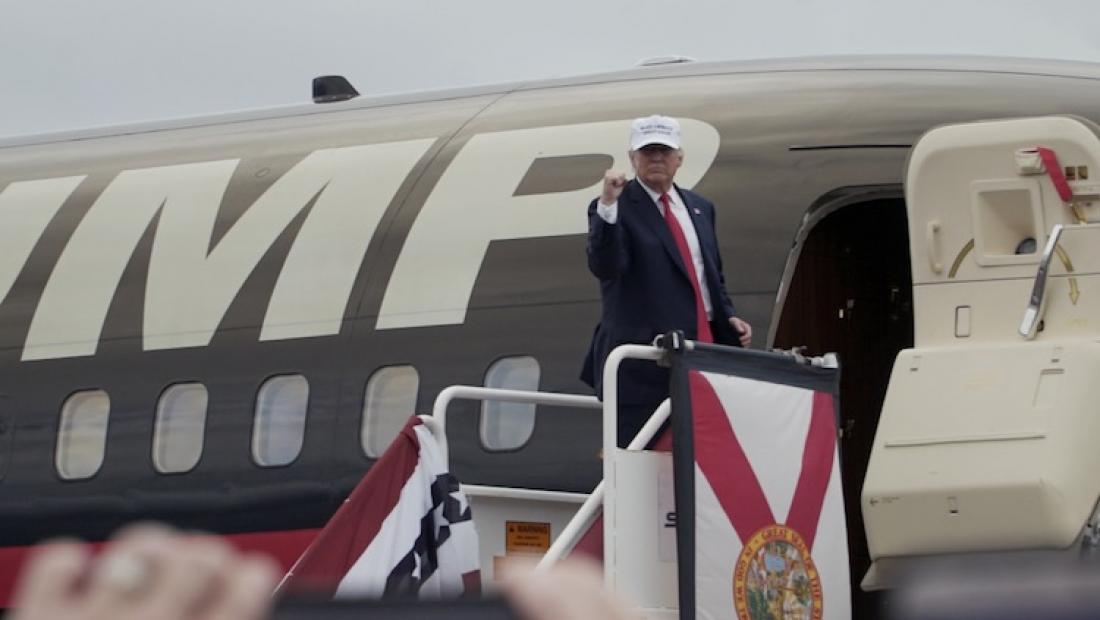Pew Finds Polarized Coverage of Polarizing President

Pew Research Center said news outlets covered President Donald Trump's first days in office distinctly differently depending on whether their audience leaned right, left or were a mix of both.
That is according to a new Pew content analysis of coverage of the first 100 days of his administration.
The study found that outlets with a "politically right-leaning audience" were five times more likely to present a positive assessment, overall, of those first 100 days, with 31% of stories versus 5% for left-leaning outlets and 6% for those with a more mixed audience.
"News outlets whose audience leans to the left politically, those whose audience leans to the right and those appealing to a more mixed audience covered a similar news agenda and mostly framed that coverage around character and leadership rather than policy," said the study, "but the sources included in the stories and the assessments of the administration’s words and actions often differed."
Digital had the largest left-leaning audience (54%) and radio the largest right-leaning audience (66%).
The outlets studied who were identified as "appearing to a right-leaning audience" were IJR, Fox News, Breitbart, and the radio shows of Sean Hannity and Rush Limbaugh.
Identified as "appealing to a left-leaning audience" were Vox, Slate, The New York Times, Politico, NPR, Huffington Post, The Los Angeles Times, the Washington Post, BuzzFeed, PBS, MSNBC and Business Insider.
Those in the "mixed audience" group were USA Today, CNN, NBC News, ABC News, CBS News, Wall Street Journal, and the International Business Times.
Across all outlets studied, stories were four times as likely to have an overall negative assessment of the Trump administration's first days (44%) as positive (11%).
The vast majority of the coverage (74%) focused on leadership and character, rather than policy (26%).
Pew defined a positive assessment as stories where there were at least twice as many positive statements as negative, and vice versa for "positive" stories.
The study found that outlets with a left-leaning audience or a mixed audience used more voices in their stories.
And the "fact checkers" were out in force on outlets with left-leaning audiences. Pew said that direct refutations of a Trump statement were seven times more likely on those (15%) of stories, versus on right-leaning outlets (2%).
For comparison purposes, Pew also looked at a smaller sample of news outlets that covered the first 60 days of the Bill Clinton, George W. Bush, Barak Obama and Trump presidencies, and found that Trump's coverage was far more negative. Coverage of Clinton in 1993 was 27% positive, Bush 22%, Obama 42% and Trump 5%.
The study looked at 3,000 news stories across 24 media outlets (TV, radio and the Web). The data was assessed by a team of four "coders" trained for this specific project.
Broadcasting & Cable Newsletter
The smarter way to stay on top of broadcasting and cable industry. Sign up below
Contributing editor John Eggerton has been an editor and/or writer on media regulation, legislation and policy for over four decades, including covering the FCC, FTC, Congress, the major media trade associations, and the federal courts. In addition to Multichannel News and Broadcasting + Cable, his work has appeared in Radio World, TV Technology, TV Fax, This Week in Consumer Electronics, Variety and the Encyclopedia Britannica.










